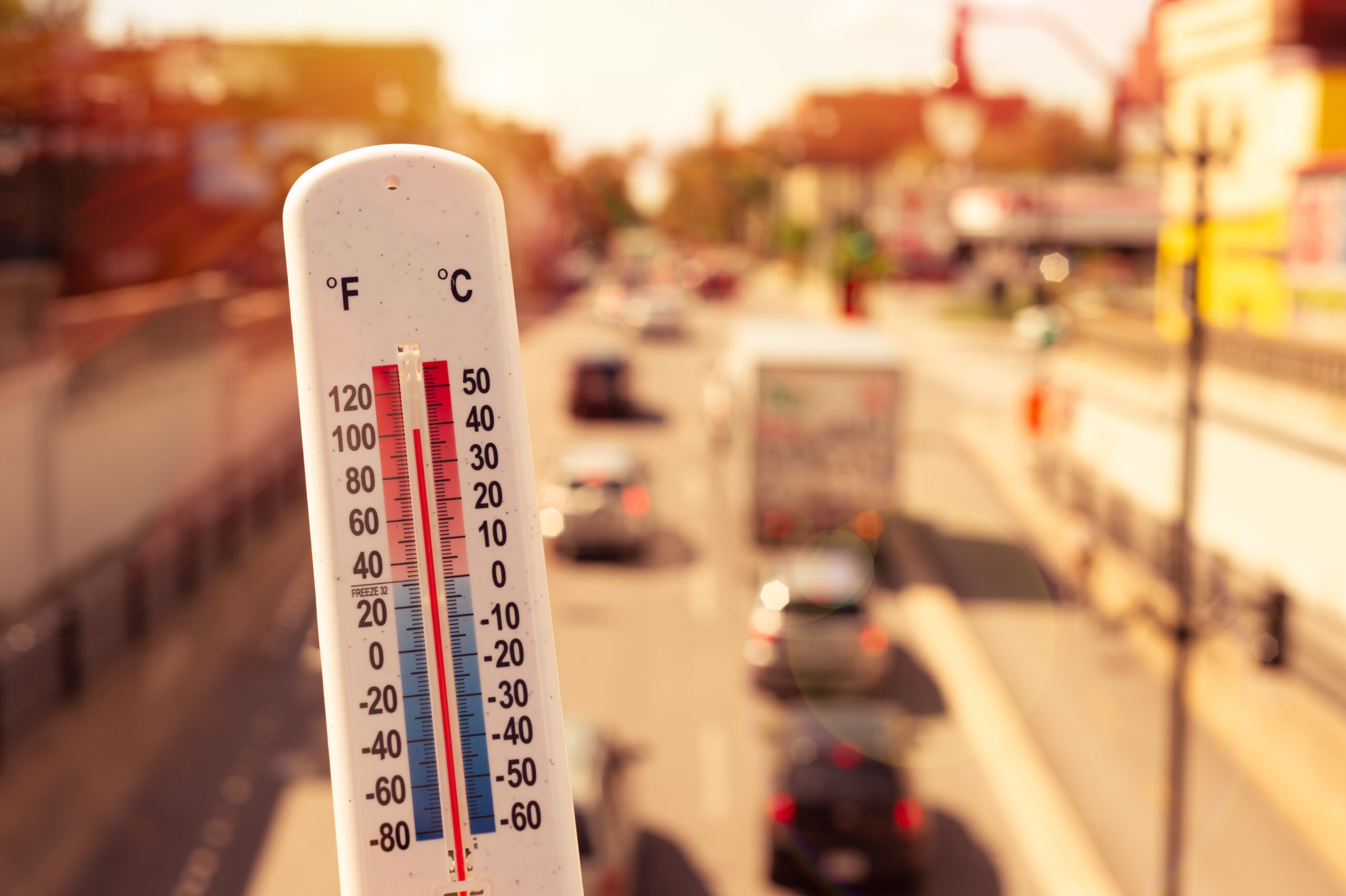Can we respond to extreme heat to protect human health and shore up infrastructure in such a way that actually accelerates a rapid, low carbon transition to reverse the climate emergency?
At the moment, everyone is feeling the heat. Europe and the UK are facing record-breaking heat waves that are causing drought, wildfires and public infrastructure to falter and buckle. Just two months ago, over a billion people across India and Pakistan were facing temperatures as high as 50°C. In the Spanish city of Seville, temperatures are expected to surpass 41°C, with thermostats expected to reach similar highs across France and Germany.

Across the Channel, the UK is staring down the most prolonged heat waves ever, where tropical nights – with temperatures staying above 20°C throughout the night – have been recorded across Yorkshire and Nottinghamshire. The ‘brutal’ heat dome that formed over Europe in the past weeks, where high pressure traps hot air over a specific area, is now moving towards the UK. According to the exports, this coming Sunday has a 30% chance of being the hottest day ever recorded in the UK as temperatures could hit 40°C in the coming weeks, beating the 38.7°C recorded just two years ago in 2019.
Extreme heat kills. In 2019, 356,000 deaths globally were attributed to extreme heat and, in England, approximately 2,000 heat-related deaths occur every year. As extreme heat becomes more frequent and severe, annual death will climb. The relevant UK authorities are rightly concerned, with the Met Office issued a rare Extreme Heat warning across England and Wales. Senior government officials also held a crisis COBRA meeting to put precautionary measures in place as the heat is expected to disrupt health services, schools, travel and energy.
In places like the UK, extreme heat reveals the inadequacies of our infrastructure, homes and public communication of extreme heat risks – all of which were created in a climate that no longer exists. Railway lines in South London caught on fire due to the heat and the trains that could run had to do so at a reduced speed due to track temperatures. On the roads, grit-spreading machines lurched into action to prevent roads melting and soak up excess bitumen. With the global economy still heavily dependent on the burning of fossil fuels, heat waves around the world will continue to become more likely and more intense.
Extreme heat brings with it a warning that humanity must heed to: the rapid and deep decarbonisation of the global economy. If emissions continue unabated, then average temperatures will rise. But, importantly, as our climate warms there is also a corresponding shift in the extremes at both the hot and cold ends of the spectrum, wreaking havoc on our infrastructure. This means that what is considered an extreme heat event today – such as the heat hitting Europe this week – will be considered normal by the middle of the century. It also means that on the current trajectory, much of the tropical regions that are currently home to three billion people will become uninhabitable due to extreme heat and humidity.
Beating the heat requires immediate responses from government and local authorities, but it also requires a longer-term strategy to embed resilience into economies so that they can deal with the future heat waves that are already locked in. Both of these can help stimulate the rapid transition we urgently need to see, as well as helping to improve air quality, health and wellbeing. But there are important infrastructure choices that must be made today that will have consequences for the climate we enter. For instance, there is a risk that energy-intensive forms of cooling become ubiquitous and, with that, rising emissions accelerate further warming, pushing temperatures to greater extremities.
In this series, the Rapid Transition Alliance will explore how housing, infrastructure and community resilience can be improved in the face of extreme heat and become part of the process of urgent decarbonisation and reducing energy demand, drawing on evidence-based hope from around the world.


